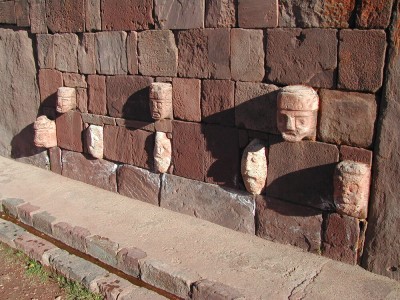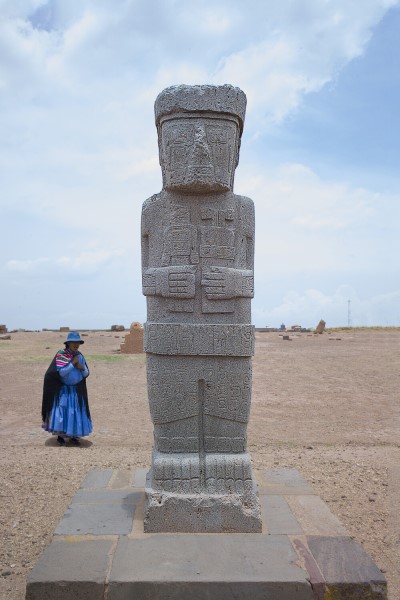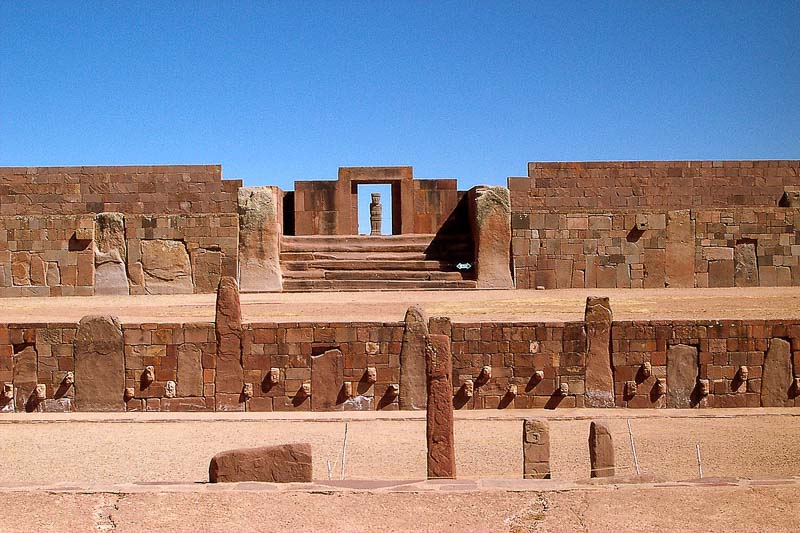Situé à 70 kilomètres de La Paz en Bolivie, près du lac Titicaca, Tiwanaku, est un site historique inscrit au patrimoine de l’UNESCO depuis 2000, et qui révèle depuis quelques années des éléments fascinants de son passé.
L’origine de la civilisation de Tiwanaku ou Tiahuanaco fait encore débat aujourd’hui. De nombreux chercheurs et historiens à travers le monde ne parviennent pas avec certitude à établir si la région a été peuplée il y a 12 000 ans, 1 500 ans ou 300 ans avant notre ère. Néanmoins, l’UNESCO situe l’apogée de cet empire entre le 6e et le 10e siècle de notre ère. À cette époque, le territoire occupé par cette civilisation s’étendait sur 600 000 kilomètres carrés, couvrant la haute plaine du lac Titicaca, une partie de l’actuelle Bolivie et le Nord du Chili. La capitale de l’empire, Tiwanaku, s’étendait sur 600 hectares et comptait entre 40 000 et 70 000 habitants.

Le site archéologique de Tiwanaku abrite plusieurs constructions qui ont malheureusement subi des dommages au fil des années ou ont été pillées. Parmi ces vestiges, le monument le plus imposant est la pyramide d’Akapana, qui s’élevait autrefois à plus de 18 mètres de hauteur et comptait sept étages en escalier. Aujourd’hui, seuls les étages inférieurs de cette structure majestueuse subsistent. Comme partout sur le site, les blocs de pierre sont sculptés avec une précision angulaire étonnante, leurs parois étant souvent aussi lisses que du papier. Un autre arrêt incontournable pour les visiteurs est le mur aux centaines de visages, tous uniques, l’atmosphère que s’en dégage est envoutante.

Le temple de Kalasasaya, considéré comme un observatoire, renferme deux monolithes sculptés ainsi que la célèbre Porte du Soleil. Celle-ci, taillée dans un seul bloc de pierre, mesure 3 mètres de hauteur sur 4 mètres de largeur. La frise qui orne son sommet représente le dieu Viracocha, également considéré dans l’empire Inca comme une dieu créateur, entouré de nombreux personnages ailés ou à tête d’oiseau. Au temple de Pumapunku, les visiteurs peuvent admirer d’immenses blocs de pierre travaillés, dont certains pèseraient jusqu’à 100 tonnes.
La civilisation de Tiwanaku avait développé des techniques avancées pour sculpter et polir la pierre, comme en témoignent les vestiges du site archéologique. Ces réalisations exceptionnelles illustrent leur maîtrise de l’art de la construction.
Malgré les nombreuses questions qui subsistent, Tiwanaku reste un lieu fascinant à visiter. Vous serez émerveillé par l’ingéniosité et la sophistication de cette ancienne civilisation. Explorez les mystères de Tiwanaku et plongez dans l’histoire captivante de ce site archéologique exceptionnel situé au cœur de la Bolivie.







